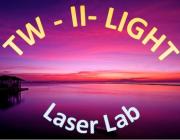Recent Publications
- Enhancement of 1μm laser pulse contrast using Transient Grating in YVO4 crystal
- A simple method for pulse contrast enhancement via self-focusing
- A GHz chirped amplitude-modulated laser for high-contrast plasma gratings
- Simulation of laser-induced tunnel ionization based on a curved waveguide
- Optical parametric amplifier pulse cleaning driven by aperiodic frequency converter
- Control of amorphous solid water target morphology induced by deposition on a charged surface
Copyright © The Hebrew University of Jerusalem
Developed by Gizra

